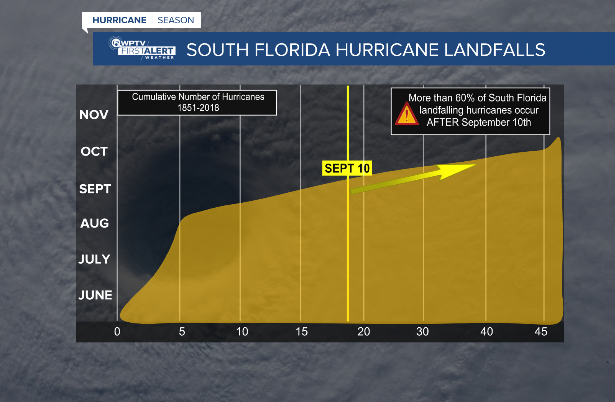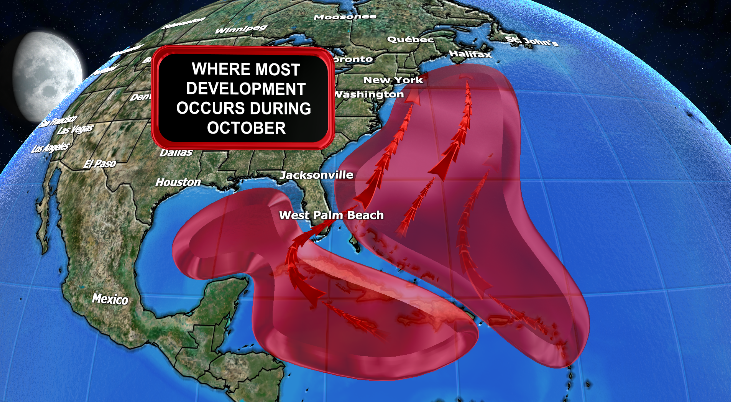WEST PALM BEACH, Fla. — Atlantic hurricane season runs from June 1 to Nov. 30. And though September is the most active month of the season, the potential for dangerous hurricanes to make landfall in Florida continues throughout October.
There have already been 20 named storms this year, leaving only Wanda before we move to an alternate list of names.
"Even though we are past the peak, more than 60% of landfalling hurricanes in South Florida happen after the peak of Hurricane season," said WPTV First Alert Weather meteorologist James Wieland.

The most named storms in a single season happened just last year with a record high 30 named storms in 2020. 14 of those were hurricanes with 4 of them appearing during the month of October.
Hurricane Wilma made landfall on Oct. 24, 2005, as a Category 3 hurricane on Florida's southwest coast. It was a Category 2 hurricane by the time it reached Palm Beach County.
TRACKING THE TROPICS: Hurricane Center | Hurricane Guide
Hurricane Michael in 2018 became the first Category 5 hurricane to hit the U.S. since Andrew in 1992. Michael made landfall in Mexico Beach, Florida, on Oct. 10 with estimated 160 mph winds, causing massive damage to the Florida Panhandle.
"Hotspots to watch in October are the northwest Caribbean, Central and eastern Gulf of Mexico, the Bahamas and off the east coast of the US," said Wieland. "These are the most favorable areas to find storms in October."

To prepare, officials said you should know your evacuation zone and where to go if you have to leave your home.
Also, prepare your hurricane kit with enough water, medications, and other necessary supplies for you and your family to last at least 72 hours.
In addition, make sure your insurance coverage is up-to-date.
"Make an emergency plan. Make sure everyone in your household knows what the plan is and where to go in case of an emergency," said Brent Bloomfield, assistant chief of the West Palm Beach Fire Rescue Department.






